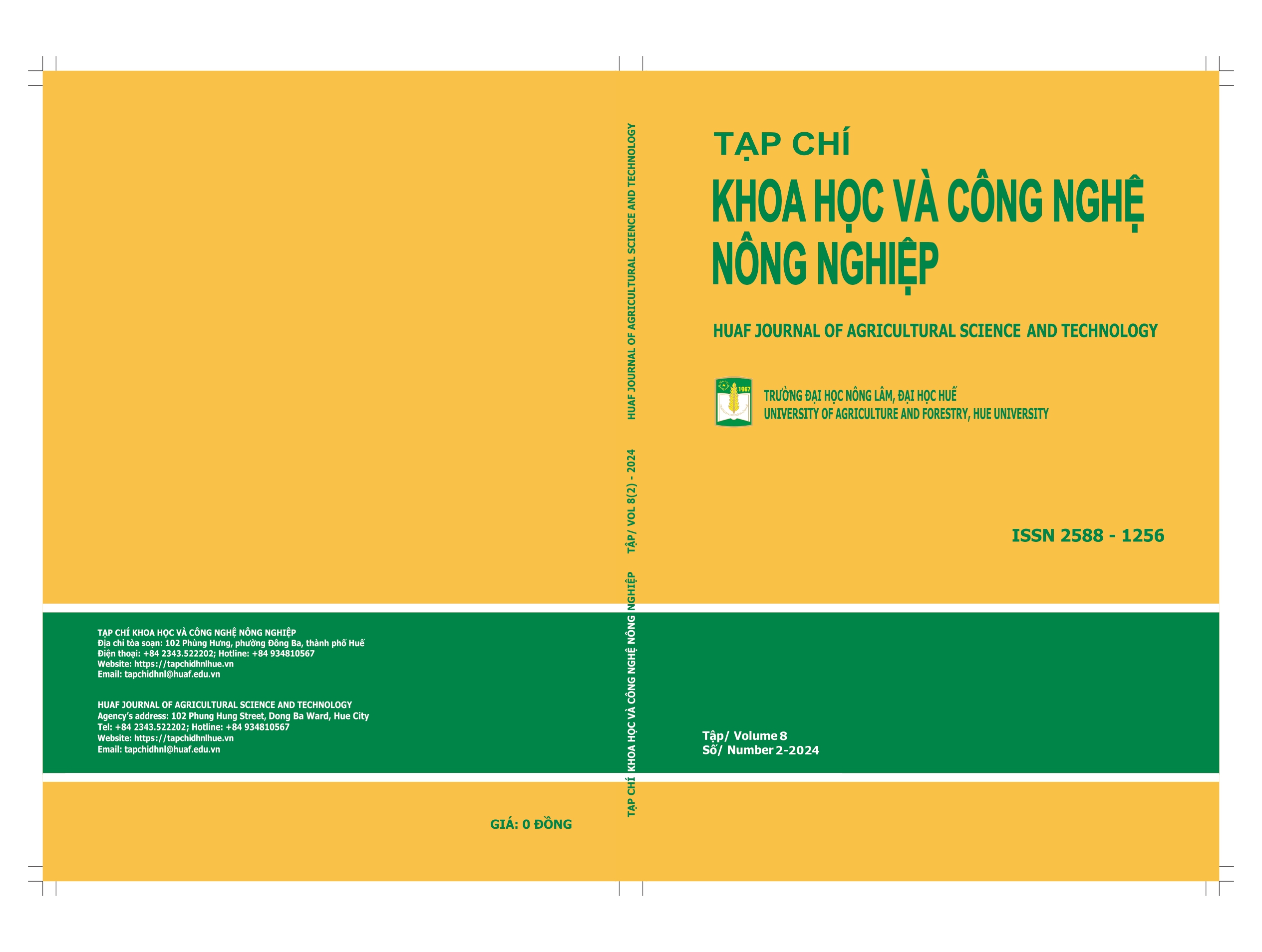##plugins.themes.huaf_theme.article.main##
Abstract
Anthracnose on papaya fruit is one of the postharvest diseases that leads to serious losses of papaya fruit. This study isolated and identified the fungus causing anthracnose on papaya through morphological characteristics and molecular biology techniques; determined the pathogenic threshold of fungi on papaya fruit by artificial infection under in vitro condition; screened the antifungal ability of 56 strains of Streptomyces spp. by streak culture method. On that basis, evaluated the percentage inhibitory radial (%) of Colletotrichum sp. base on the growth of colony diameter on PDA medium using cell-free supernatant (CFS) of Streptomyces murinus NARZ. The results indicated that anthracnose disease on papaya fruit is caused by the fungal strain C. truncatum M2. The most appropriate artificial pathogenic threshold of C. truncatum M2 on papaya fruit was at a concentration of 106 spores/mL. Out of the 56 strains of Streptomyces spp. used to screen for antifungal ability by streak culture method, S. murinus NARZ strain showed the strongest antifungal activities against C. truncatum M2. The S. murinus NARZ strain completely inhihited the growth of C. truncatum M2 and was selected to determine the antagonistic activity under in vitro conditions. At concentration of 50% CFS obtained from S. murinus NARZ, the percentage inhibitory radial growth of C. truncatum M2 reached 56,72%, higher than those of positive controls (erythoromycin and nystatin).


